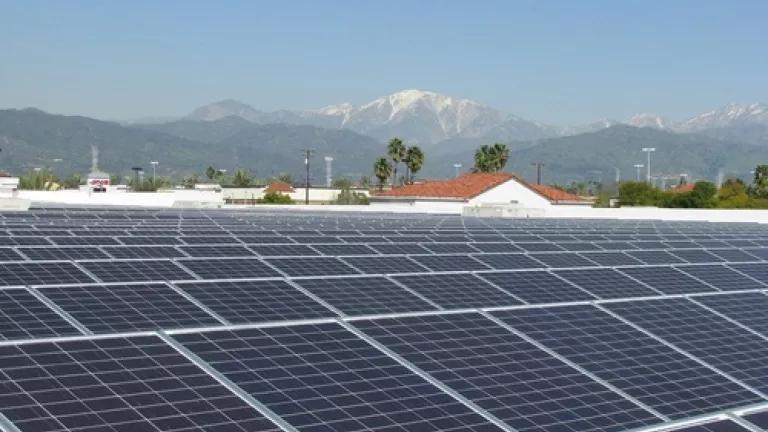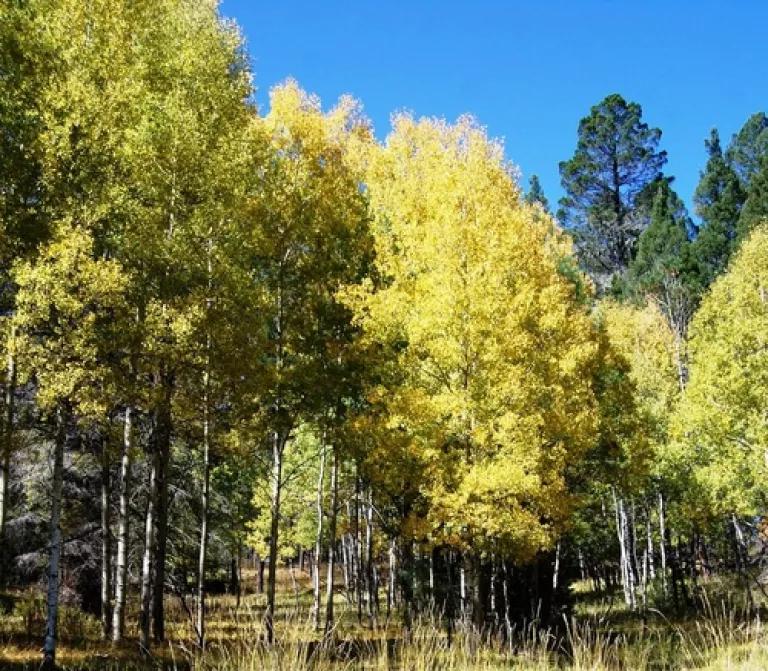Western Energy News Round-Up: Solar Growth and Storage, Wind Advances along Gulf Coast, State Battle over Looming Water Crisis, and Dire Forecast for Southwestern Forests

Western Energy News Round-Up is a periodic selection of news highlighting recent energy and environmental issues in the western United States.
October 10 – October 18, 2013
Renewable Energy:
New Report: Leading U.S. Companies Make Big Investments in Solar Energy
The Solar Energy Industries Association (SEIA) and the Vote Solar Initiative released the annual Solar Means Business report, identifying major commercial solar projects and ranking America’s top corporate solar users (see this infographic of top companies). Solar growth among these leading businesses reflects the growth in the U.S. commercial solar sector as a whole, which increased over 40% since last year. A review of last year’s corporate solar leaders is available here.
(SEIA, October 15, 2013)
Solar panels power a Walmart store in Covina, California. (Photo by Walmart Corporate, under Creative Commons licensing.)
Gulf Coast Beckons Wind Farms When West Texas Gusts Fade
Texas pulled ahead last decade in the U.S. race to develop wind power thanks to the hardy gusts sweeping across its vast prairies and energy-friendly landowners. Now it’s seizing the lead in building turbines along its shoreline as developers find the slower but steadier air currents there translate to bigger profits. By 2015, the state is slated to almost double its 1,700 megawatt capacity from turbines located along its southern coast.
(Bloomberg, October 11, 2013)
Infamous California ‘Duck Curve’ is Out of Date
The "duck chart" emerged several years ago as grid operators were contemplating the rise of renewable energy, as mandated by state law. It illustrates the drop in daytime demand for conventional power that can be expected as renewables increase their share. But the duck model overstates the issue, California energy experts said last week at a conference put on by the Berkeley Energy and Resources Collaborative, a program at the University of California, Berkeley.
(E&E News, October 16, 2013)
NRDC Blog: California's Clean Energy Leadership
A newspaper article published Monday challenges some of California's clean energy investments and indicates some confusion about who is administering most of the energy-saving and renewable energy programs in our state – it’s California's public and investor-owned utilities, not the state itself. And thanks to them, we’ve reduced our electricity bills and pollution well below national averages. That's a key fact notably missing from the article.
(Switchboard, October 14, 2013)
First US Solar Plant That Stores Energy Is Online in Arizona
The Solana Solar Concentrating Plant came online this week in Arizona - the first time a solar plant is producing energy at night. Built by Spain-based Abengoa, molten salt technology stores the heat produced from solar energy throughout the day and then releases it slowly at night. The plant can operate at full capacity for six hours after sunset, which coincides with peak demand in Arizona.
(Sustainable Business News, October 10. 2013)
Fossil Fuels:
U.S. Supreme Court Nixes Oil Leases on Utah's Pristine Lands
Thousands of acres of land near Utah's national parks are better protected from oil and gas development thanks to a new U.S. Supreme Court decision. This case should serve as an example to federal agencies to acknowledge priorities other than drilling - such as recreation, tourism and wildlife habitat.
(Public News Service, October 9, 2013)
Climate Change:

Quaking aspens in New Mexico’s Lincoln National Forest at 8,600 feet above sea level. (Photo by Garland Cannon, under Creative Commons licensing.)
Climate change will kill southwestern forests
Rising temperatures are killing forests, and research by Los Alamos National Laboratory scientists finds it is highly likely that the southwest, including New Mexico, will lose the vast majority of its forests by 2050. But another Los Alamos researcher says Ocean temps may delay region's disaster. The next five years will determine whether the Southwest keeps on its hotter, drier path or enjoys a reprieve with some increased precipitation, depending on which way sea surface temperatures swing in the North Atlantic Ocean. This new research posits that temperature warming regionally could be postponed for 30 to 40 years, giving the region time to transition at a reasonable pace to a non-fossil fuel economy. Here is my take on the issue, and the need for action.
(Santa Fe New Mexican, October 8, 2013 and October 14, 2013)
Exploding spruce beetle outbreak in Colo. forests linked to long-term drought – study
Spruce beetles are the new threat in Colorado's already beleaguered mountain forests, and according to new research, long-term drought is likely behind their epidemic-like spread. With climate change, more activity is expected as long as there's spruce trees for spruce beetles to infest.
(E&E News, October 11, 2013)
Oregon's Mile of Glacier Caves: A Hidden, And Disappearing, World
Underneath the Sandy Glacier on Oregon's Mount Hood are what are thought to be America's largest known glacier caves outside Alaska. In the past 100 years, Sandy Glacier has shrunk by about 50 percent due to climate change, making the caves underneath a short-lived treasure.
(NPR, October 8, 2013)
Conservation:
Water fight between Montana, Wyoming going to trial
A legal clash over water rights on the arid Northern Plains is bound for trial as attorneys for Montana press their case that Wyoming farmers and oil-and-gas companies are sucking too much water from tributaries of the Yellowstone River. Attorneys for Montana claim the state was unfairly denied more than 3.3 billion gallons of water during several years of drought in the past decade.
(Billings Gazette, October 14, 2013)
Ted Turner, AG, join groups fighting new mine rules
New Mexico’s attorney general, two environmental groups and media mogul Ted Turner on Thursday appealed a copper regulation approved by the state Water Quality Control Commission. According to the AG, the Copper Mine Rule violates the state Water Quality Act because it allows for groundwater underneath copper mine sites to be contaminated at levels above groundwater quality standards, and ninety-percent of New Mexicans rely on groundwater supplies for drinking water.
(Santa Fe New Mexican, October 11, 2013)
Compiled by Meredith Connolly
